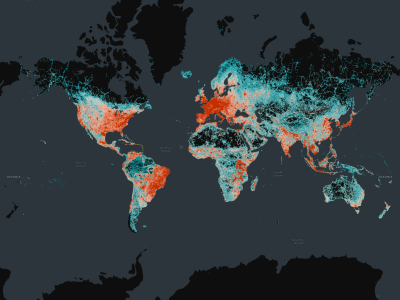Leica Geosystems’ content-rich HDS 2006 Worldwide User Conference drew more than 200 participants from 17 countries to San Ramon, CA this week. Customers presented projects covering an enormous breadth of applications – construction QA and operations monitoring of Boston’s Big Dig roof panels, asset management of Nevada’s bridges, historic preservation of Jerusalem’s Temple Mount wall, landslide analysis in Japan, urban modeling in Glasgow, forensic investigation, onshore and offshore process facility revamps, design and fabrication of building panels, plant fabrication QA, much more. Watch for our coverage in coming weeks.
Ken Mooyman, vice president in charge of Leica HDS, reported figures that reinforce our belief the technology has exited the early-adopter phase and is strongly into the first wave of mainstream customers. This year Leica HDS has seen more than a fivefold increase in number of customers who own two or more scanners, plus an increase in customers ordering multiple scanners at once. Mooyman named two recent examples – the California Highway Patrol and BIMTAS, an EPC serving the city of Istanbul, each ordered five scanners and a total of 35 copies of software.
Although Leica Geosystems is now owned by Hexagon AB, Mooyman made the point that, far from paying hefty corporate charges to its parent, the HDS business continues reinvesting heavily in R & D – by the end of this year it will have increased its software R & D team by 57% and its hardware team by 90%. It’s also invested to strengthen product quality – in software it hired a dedicated QA/QC manager, while in hardware it created and funded new R & D projects to address quality. As a result, failure rates of scanners shipping today are 40% less than a year ago, it says.
Going forward, a focus will be delivering new product more quickly and consistently, and increasing usability – both will come partly from tailoring current products into vertically targeted solutions such as ScanStation that embody familiar application-specific workflows. Making users more productive will also be a focus – for example two new software products announced at the conference, Leica TruView and Cyclone PUBLISHER, are designed to make point cloud data more usable by practitioners who don’t have laser scanning, CAD or 3D expertise. Cyclone PUBLISHER is a new Cyclone module for publishing point clouds and images in a panoramic viewing format similar to PDF files. TruView is free software for viewing and measuring those files – first impression is that ease of use appears similar to Adobe Acrobat 3D. The new software will be available with release of Cyclone 5.6, planned for December.
In another important move, Leica HDS says it will provide more open data formats for its scanner data going forward. Details remain sketchy, but Mooyman disclosed that next year the company plans to deliver an SDK (software developers’ toolkit).
At the same time it promises to work even more closely with software partners. Two lunchtime keynotes, by Autodesk‘s Dr. Gene Roe and AVEVA‘s Neil McPhater, underscored this.
Some trends – more than one presenter emphasized their firms’ evolution from “executing laser scanning projects” to using laser scanning as an everyday tool. At the same time resistance remains – for example we heard how some DOT survey departments are eager to exploit laser scanning, but their design departments still work largely in 2D and don’t yet see the value. One hopeful sign – speaker after speaker described how workers who grew up in the digital age take to 3D right away, and how 3D-savvy managers are starting to take the reins in their organizations. We also saw evidence that scanning is being recognized as more than a design aid – that the potential benefits are greater for construction applications, and greater still for asset management – but asset lifecycle uses will require database applications only now starting to be conceived and developed.




